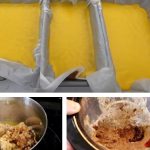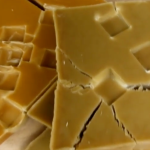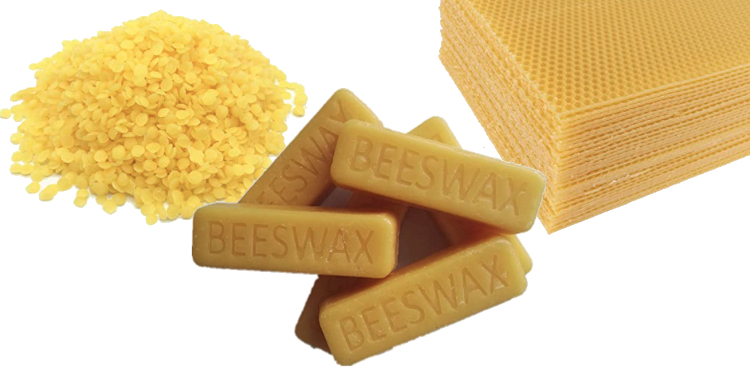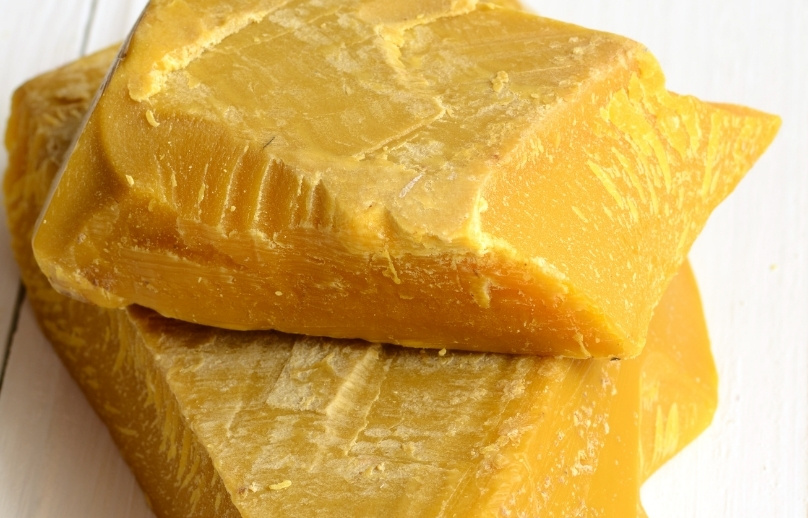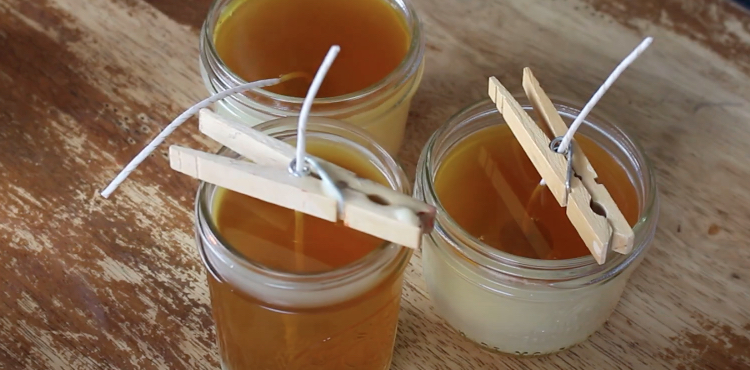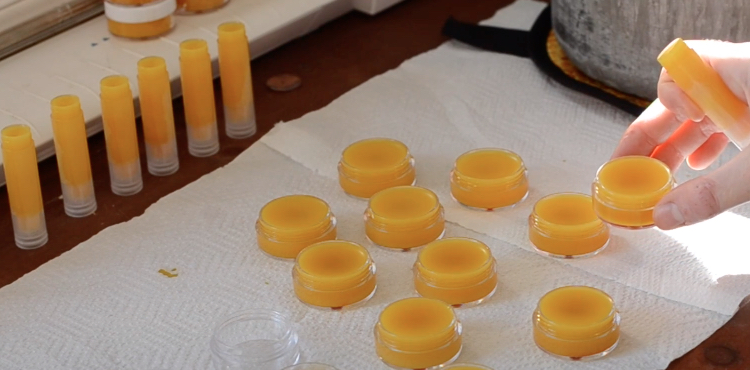Buzz! Buzz! Ever wondered about the secret life of bees? Well, hold onto your honey because we’re about to talk about one of nature’s most amazing processes!
Did you know that a single bee in her lifetime produces only about 1/12th of a teaspoon of honey, but even less beeswax? It’s true! These tiny insects are nature’s master chemists, turning flower nectar into not just honey, but also the incredible substance we know as beeswax.
From the intricate honeycombs to the products we use daily, beeswax is a true marvel of the natural world. So, let’s shrink down to bee-size and explore the buzzing world of beeswax production!
- The Bees Behind The Wax: Worker Bee Anatomy
- The Chemical Magic: From Honey To Wax
- The Wax-Making Process Step By Step
- Environmental Factors Influencing Wax Production
- The Many Uses Of Beeswax Within The Hive
- Beeswax Harvesting: From Hive To Human Use
- The Importance Of Beeswax In Bee Communication
- The Final Buzz
The Bees Behind The Wax: Worker Bee Anatomy
You know, I’ve always been fascinated by bees. It’s crazy how these tiny creatures can create something as useful as beeswax. Let me share what I’ve learned about the amazing anatomy of worker bees.
Age And Development Of Wax-Producing Bees
Worker bees start producing wax when they’re about 12-18 days old. It’s like they hit bee puberty and suddenly become wax machines! I remember watching a hive and noticing how the younger bees seemed to hang out in clusters. Turns out, they were keeping warm to soften their wax.
Location And Structure Of Wax Glands
The wax glands are located on the bee’s abdomen. There’s eight of ’em, four on each side. They’re like little wax factories hidden under overlapping plates called sternites. Pretty nifty design, if you ask me.
The Role Of The Hypopharyngeal Gland
This gland’s a mouthful to say, but it’s crucial for wax production. It secretes enzymes that help turn honey into wax. I once tried to explain this to my nephew and ended up with a “hypo-what-now?” look.
Differences Between Queen, Worker, And Drone Bees
Here’s the kicker – only worker bees have wax glands. Queens and drones are freeloaders in the wax department. Workers really are the unsung heroes of the hive.
Lifespan And Wax Production Capacity
A worker bee’s wax-producing days are limited. They can make wax for about a week before moving on to other jobs. It’s like a short-lived superpower. Kinda makes you appreciate every bit of beeswax, doesn’t it?
The Chemical Magic: From Honey To Wax
Man, the way bees turn honey into wax is like alchemy. It’s a process that never fails to amaze me, even after years of beekeeping.
Conversion Of Sugar To Wax In Bee Bodies
So, it all starts with sugar. Bees slurp up nectar, which is basically sugar water, and convert it to honey in their honey stomachs.
Then, through some crazy internal chemistry, they transform that honey into wax. It’s like they’re tiny, flying sugar refineries!
Composition Of Beeswax (Esters, Acids, Hydrocarbons)
Beeswax isn’t just one thing – it’s a cocktail of different compounds. You’ve got esters, acids, and hydrocarbons all mixed up together.
I once tried to explain this to my kid and ended up comparing it to a really complicated cake recipe. Not sure if that helped or just made her hungry.
The Role Of Enzymes In Wax Production
Enzymes are the real MVPs here. They’re like little chemical workers, breaking down the honey and rebuilding it into wax. Without these enzymes, bees would just be full of sugar water!
Energy Requirements For Wax Creation
Making wax is hard work for bees. They need to eat about 8 pounds of honey to produce 1 pound of wax. Talk about a high-energy diet! It’s no wonder they’re always so busy.
Factors Affecting Wax Quality
Just like how my coffee tastes different depending on the beans I use, the quality of beeswax can vary. Things like the bee’s diet, age, and even the weather can affect the wax.
I’ve seen some hives produce wax that’s almost white, while others make a deep yellow wax. It’s pretty cool how nature gives us this variety.
The Wax-Making Process Step By Step
Alright, let’s break down how bees actually make this miracle substance. It’s a process that’s fascinated me ever since I started keeping bees in my backyard.
Nectar Collection And Honey Production
First things first, the bees gotta eat. They zip around collecting nectar from flowers, storing it in their honey stomachs. Back at the hive, they pass this nectar around, adding enzymes and reducing water content. Voila! Honey is born.
Activation Of Wax Glands
Once a worker bee hits that sweet spot between 12 and 18 days old, their wax glands kick into gear. It’s like they suddenly got their wax-making license. I remember watching my first hive and being amazed at how the younger bees seemed to change roles overnight.
Secretion Of Wax Scales
The wax oozes out as tiny flakes from glands on the bee’s abdomen. These wax scales are super thin – about 3 millimeters wide and only 0.1 millimeters thick. Talk about precision engineering!
Manipulation And Shaping Of Wax By Bees
This is where the real magic happens. The bees take these wax flakes and work ’em with their mandibles, mixing in pollen oils and other secretions. It’s like they’re tiny sculptors, molding their medium.
Construction Of Honeycomb Cells
Finally, they use this wax to build those perfect hexagonal cells we all know and love. I’ve tried to make hexagons by hand, and let me tell you, it’s not easy. These bees put my artistic skills to shame every time. The precision and teamwork they show in building these structures never ceases to amaze me.
Environmental Factors Influencing Wax Production
You know, keeping bees has taught me that these little guys are seriously affected by their surroundings. It’s like they’re nature’s tiny environmentalists.
Temperature And Its Effect On Wax Secretion
Temperature is a big deal for wax production. Bees need it warm – around 95°F (35°C) – to secrete wax efficiently. I remember one chilly spring when my hives barely produced any wax. Lesson learned: bees need their comfort zone!
Importance Of Proper Nutrition For Wax-Making Bees
Just like us, bees need good food to do their job well. Pollen diversity is key. I once tried planting a variety of flowers around my hives, and wow, did I see a difference in wax production!
Impact Of Pesticides And Pollutants On Wax Quality
This one’s a bummer. Pesticides can really mess with wax quality. I’ve seen hives near heavily sprayed fields produce brittle, discolored wax. It’s a stark reminder of how connected everything is in nature.
Seasonal Variations In Wax Production
Bees are seasonal workers when it comes to wax. They ramp up production in spring and early summer, then slow down as winter approaches. It’s like they have their own work calendar!
Colony Health And Its Relation To Wax Output
A healthy hive is a productive hive. When my colonies are thriving, with a strong queen and lots of young bees, the wax production goes through the roof. It’s all connected – happy bees make more wax!
The Many Uses Of Beeswax Within The Hive
Man, bees are clever little engineers. They use wax for pretty much everything in the hive. It’s like their Swiss Army knife!
Building And Repairing Honeycomb Structures
Wax is the building material of choice for bees. They use it to construct those perfect hexagonal cells we all know. I’ve watched them patch up damaged comb – it’s like a tiny construction crew at work!
Capping Honey Cells For Storage
Once a cell is full of honey, bees seal it with a wax cap. It’s their way of “canning” honey for long-term storage. Smart, right? I always get excited when I see capped honey – it means harvest time is near!
Creating Propolis (Bee Glue) With Wax
Bees mix wax with tree resins to make propolis, a sort of all-purpose glue and sealant. They use it to fix cracks, reduce hive entrances, and even embalm intruders! Nature’s caulk, I call it.
Regulating Hive Temperature And Humidity
Bees are masters of climate control, and wax plays a big role. They’ll adjust cell sizes and wall thickness to manage temperature and humidity. It’s like they’re building their own HVAC system!
Protecting Against Pests And Diseases
Wax has antimicrobial properties, helping keep the hive healthy. Bees will even entomb small hive beetles in wax prisons! Talk about home security.
Beeswax Harvesting: From Hive To Human Use
Harvesting beeswax is an art and a science. It’s taken me years to get it right, and I’m still learning!
Sustainable Harvesting Practices
The key is not to be greedy. I always leave enough wax and honey for the bees. It’s about finding that balance between harvest and hive health. Happy bees, happy beekeeper!
Extraction Methods (Heat, Pressure, Solvents)
There’s a few ways to get wax out of combs. I prefer the heat method – melting the wax and letting it separate naturally. Some people use pressure or even solvents, but I like to keep it simple.
Purification And Refinement Processes
Raw wax needs cleaning. I filter mine through cheesecloth to remove bits of bee and debris. Then it’s a process of melting and cooling to get that pure, clean wax. It’s messy work, but so satisfying!
Grading Systems For Beeswax Quality
Not all wax is created equal. Color, aroma, and purity all factor in. The best stuff is light colored and sweet-smelling. I once entered some of my wax in a county fair contest – didn’t win, but learned a lot about quality!
Yield Expectations From A Typical Hive
On average, I get about 1-2 pounds of wax per hive per year. It doesn’t sound like much, but a little goes a long way. Plus, it’s a bonus on top of the honey harvest. Every bit counts in beekeeping!
The Importance Of Beeswax In Bee Communication
You know, I used to think bees just buzzed to talk. Wow, was I wrong! Turns out, their wax is like a bulletin board, cell phone, and dance floor all rolled into one.
Chemical Signals In Beeswax
Beeswax is chock-full of chemical signals. It’s like their version of text messaging. I once watched a group of bees all turn towards a piece of comb at the same time – later learned they were responding to a chemical cue in the wax. Mind-blowing stuff!
Role In Queen And Worker Bee Interactions
The queen bee leaves her mark on the wax, literally. Her pheromones get absorbed into it, letting the whole hive know she’s alive and well. It’s like she’s leaving little “I’m here!” sticky notes all over the place.
Pheromone Retention In Wax Structures
Wax is great at holding onto pheromones. It’s like a scent library for the bees. I’ve noticed that when I introduce a new queen, the bees take a while to accept her. Now I know it’s because the old queen’s scent is still in the wax!
Importance In Orienting New Bees
For baby bees, the wax is like a map of their new home. The familiar scent helps them navigate the hive. It’s kinda like how I used to leave trails of breadcrumbs for my kids in the backyard. Same idea, just way more sophisticated!
Wax As A Medium For Vibration Signals
Get this – bees use wax to transmit vibrations! They’ll do a little dance on the comb to tell others where to find food. The wax amplifies these vibrations. It’s like their own disco floor, but with a purpose. Nature never ceases to amaze me!
The Final Buzz
Isn’t it mind-blowing how these tiny creatures create something so versatile and valuable? From the intricate dance of worker bees to the complex chemical processes within their bodies, the production of beeswax is truly a testament to the wonders of nature.
Next time you light a beeswax candle or use a natural lip balm, take a moment to appreciate the incredible journey from flower to hive to your hands. If you’re interested in purchasing pure beeswax for your own projects, check out my complete guide to buying pure beeswax sheets, pellets and bars. The world of bees is a reminder of the delicate balance in our ecosystem and the importance of protecting these industrious insects.
So, let’s give a big buzz of appreciation to our waxy little friends – they’re not just making honey, they’re crafting a substance that’s been valued by humans for thousands of years. Keep calm and wax on, bee lovers!


